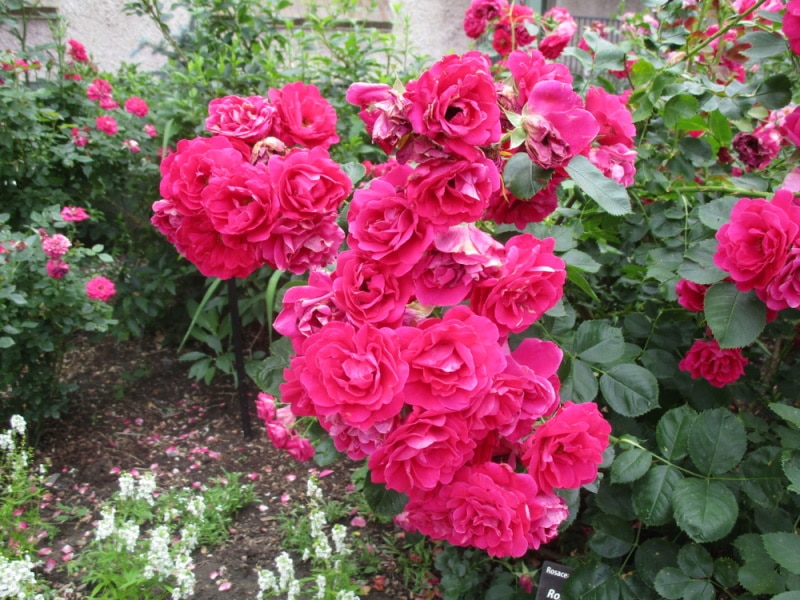6 Steps to Prune Knockout Roses and Keep Them Healthy
-
- Last updated:

One of the most essential practices for maintaining your knockout rose bush and keeping it healthy is pruning. Pruning a knockout rose bush keeps its branches from getting too long and leggy, which makes it easier to manage the plant so you can keep it healthy and growing.
It also encourages new growth and produces more flowering stems. Pruning your knockout rose bush at the right time of year helps ensure the plant isn’t left scarred with pruning wounds that could lead to disease or pest issues. And if you do not prune your knockout rose regularly, you might notice some yellow leaves in summer, followed by sparse new growth in fall.
By setting up a regular maintenance schedule for your knockout rose, you can make sure it stays happy and thriving all year round. Keep reading to learn how to properly prune knockout roses so they grow strong, produce flowers frequently, and stay healthy from inside out.

How to Prune Knockout Roses in 6 Steps
1. Always Start with The Basics

The most important part of pruning is to make sure to do it at the right time of year. Generally, you want to prune knockout roses in the fall. Once the weather starts to cool down, they will be less likely to be bothered by pests and diseases, making the pruning process easier on the plant. If you live in a warm climate, you can prune your knockout roses in the spring.
If you prune in the heat of summer, you may cause the plant to grow leaves and flowers at a faster rate. This could lead to your knockout roses getting leggy and stretched out as the season progresses. If you live in a warm climate or have a knockout rose plant that does not normally bloom in the spring, you will probably want to prune your rose in the fall. In all other cases, spring pruning will be fine.
2. Remove Dead Canes & Leaves

When you prune your knockout roses, the first step is to remove any dead canes (branches) or leaves. This will help keep the plant’s roots and leaves healthy and minimize the risk of disease. To find dead canes, look for canes that are brown or wilted.
To find dead leaves, look for leaves that are brown and brittle instead of a vibrant green color. If you can’t tell which branches are dead versus which ones are dried out and dying, cut back the entire branch by at least half. This will help you get rid of any dead branches that could be spreading disease throughout the plant, while still keeping the rest of the rose healthy.
3. Check For Damaged Vines & Shoots

Next, check for damaged vines and shoots. Knockout roses have long vines with shoots or stems that grow from the main vine, and short stubby branches that grow from the main vine. If you see any vines or shoots that are bent or broken, cut them off at the base of the plant.
This will prevent the broken part from spreading disease to the rest of the plant. If you see any vines or shoots that have been chewed by pests, such as slugs or snails, cut those off at the base of the plant as well. If there are any vines or shoots that are growing in places they shouldn’t, discard them by cutting them off at the base. This will help keep the plant’s structure balanced, while also reducing the risk of disease.
4. Look For Crowded Areas & Discard Overgrown Shoots

Next, look for crowded areas and discard any shoots that are growing too close together. Knockout roses often produce two shoots per vine, which means a single vine could potentially have up to four shoots growing from it.
If you see two or more shoots growing from one vine, or if you see shoots growing too close together, cut the extras off at the base of the plant. This will help ensure the rest of the plant receives enough nutrients from the soil to grow strong, and that each shoot gets plenty of sunlight so it can produce plenty of flowers!
5. Discard Broken or Diseased Canes

Finally, discard any canes that are broken or diseased. Broken or diseased canes will not heal or produce flowers, which means they are just taking up valuable space in your knockout rose bush. If you see any canes that are broken or diseased, cut those off at the base of the plant. If a broken cane is left in the soil, it could get into the roots and spread disease to the rest of the plant. And if you notice that a cane that has been chewed by pests, such as caterpillars or snails, cut it off just above where the damage ends. If a broken or diseased cane has grown roots in the soil, dig it out of the ground and throw it away. Do not leave it in the soil where it could infect other parts of the plant.
6. Cut Back Healthy Canes By 1/3 (or more)

Next, you want to look for healthy canes to cut back by 1/3 (or more). This will encourage new growth and more flowers from your knockout rose. To find canes to cut back, look for ones that are green and vibrant. They should not be wilted, bent, or broken.
Look for canes that are growing up and away from the center of the plant. They should be growing straight up and down, with no weird bends or curves in them. If you see a cane that is growing in the wrong direction, or if canes are growing in the wrong areas of the plant, cut those off. Cut them back by 1/3, or even closer if you want to encourage new growth from that cane.

Wrapping Things Up
When it comes to pruning knockout roses, the most important thing is to be diligent. When you see something that does not belong, something that’s not growing in the right direction, or something that’s dead, cut it out. This will keep your knockout roses healthy and help them bloom beautifully. It’s important to prune the roses whenever they need it, so if a rose bush is getting too tall, prune it to keep it shorter. If a bush is getting too wide, prune it to keep it from becoming unmanageable.
Featured Image Credit By: Bethany Anthony, Shutterstock
Contents

